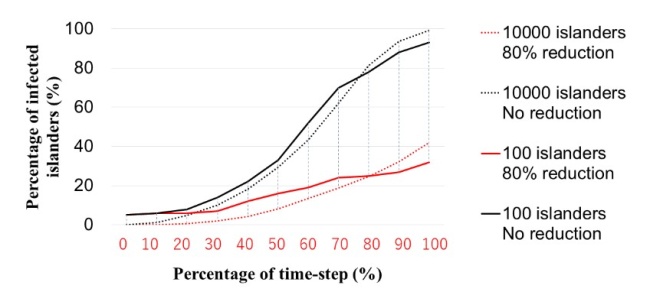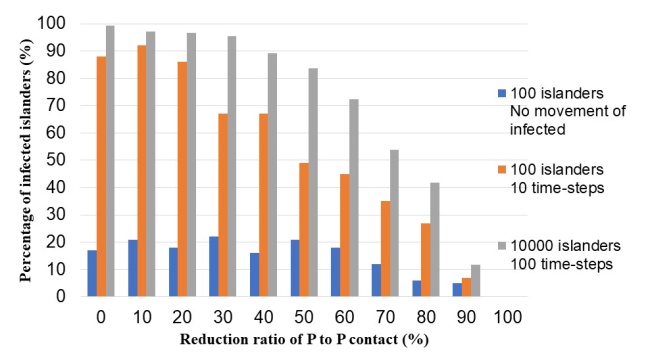Information of Paper
Author:Toshiaki Ichinose, Danhe Tian, Yifeng Li
Year:2020
Journal:International Journal of Social Science Studies, Vol. 8, No. 6; 35-40.
Link to the paper
Keywords
COVID-19, epidemics, infection control, random walk model, spatial model
Abstract
To stop pandemic of the 2019 novel coronavirus (COVID-19), "an 80 percent reduction of person to person contact opportunities" was proposed by the Japanese government. This guideline was based on the result of macroscopic differential equation model akin to the SIR (Susceptible-Infected-Recovered) model. For the purpose of indicating person to person’s infection mechanism intuitively, we built a new model to calculate infections between two persons who are in contact each other. This model adopted a spatial random walk model to express random movement of people in a specific 2-D geographical space. This model was applied to verify the effect of the proposed infection control procedure, "80 percent reduction". The result of the numerical simulation supported a proposed infection control procedure of "an 80 percent reduction" derived by the SIR model






